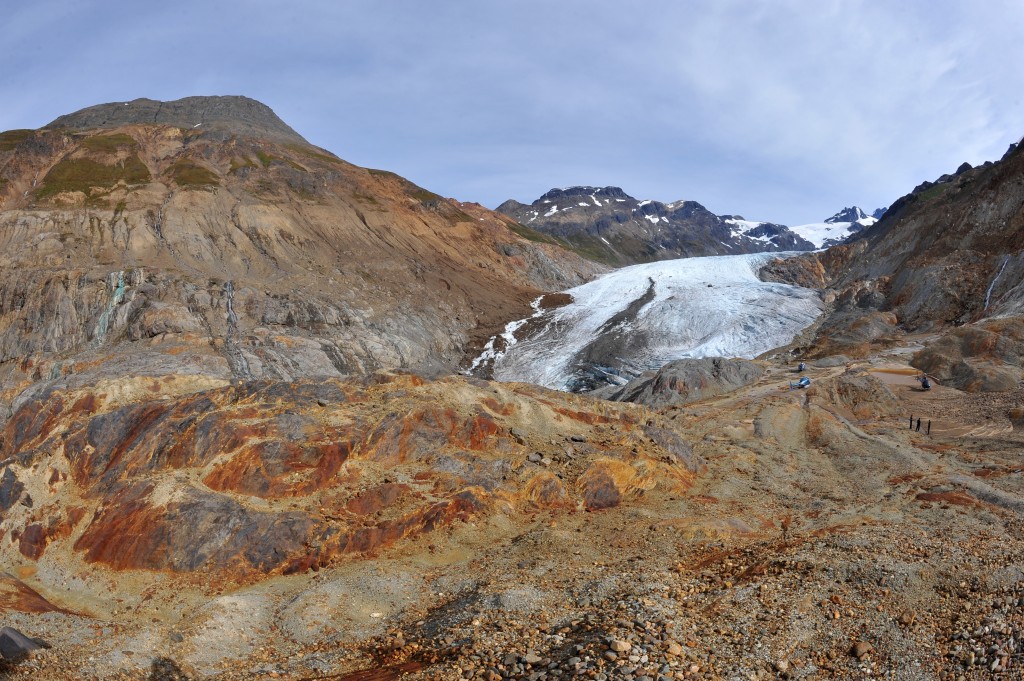Prefeasibility update on Seabridge’s KSM gold project shows 426% increase in after-tax NPV

Seabridge Gold (TSX: SEA; NYSE: SA) has released an updated preliminary feasibility study (PFS) for its 100% owned KSM project located in northern British Columbia, considered to be one of the largest undeveloped gold projects in the world measured by reserves. The study was prepared by Tetra Tech, the same firm that authored the previous PFS (2016).
Compared to the 2016 version, the 2022 PFS shows a considerably more sustainable and profitable mining operation at KSM, with the project now consisting of an all open pit mine plan that includes the Mitchell, East Mitchell and Sulphurets deposits.
The design improvements to enhance its sustainability include a smaller environmental footprint, reduced waste rock production, reduced green house gas emissions by electrification of the mine haul fleet, a 50% increase in mill throughput, and the elimination of capital-intensive block cave mining.
“We have redesigned KSM for an inflationary environment. The themes for this PFS are capital and energy efficiency. The mine plan is simplified to bring total capital down below 2016 estimates despite inflation by reducing sustaining capital,” Seabridge’s CEO Rudi Fronk said in a media release.
The primary reasons for the improvements in the plan arise from the acquisition of the East Mitchell open pit resource and an expansion to planned mill throughput. Since 2016, the reserve base at KSM (proven and probable) has grown 22%, from 38.8 million oz. to 47.3 million oz. (2.3 billion tonnes grading 0.64 g/t), due to higher gold grades added from the East Mitchell deposit. Mill throughput has increased from 130,000 to 195,000 t/d. The strip ratio has also been reduced by 23% to approximately 1:1.
This would result in a significant improvement in the KSM project’s profitability through an estimated 90% increase in average annual gold production, plus a 22% increase in copper production, 36% increase in silver production and 363% increase in molybdenum production.
Over the projected 33-year mine life, total after-tax net cash flow generated by the KSM project would reach $23.9 billion, up from $10 billion previously. The initial capital would increase slightly from $5 billion to $6.4 billion, primarily due to inflation. Its after-tax net present value (at 5% discount) has increased by 426% from $1.5 billion to $7.9 billion, with the internal rate of return doubling from 8.0% to 16.1%. These parameters would drop the project’s payback period from 6.8 years to 3.7 years.
The 2022 PFS uses previously disclosed mineral resource estimates that are based on metals prices of $1,300/oz. gold, $3.00/lb. copper, $20.00/oz. silver and $9.70/lb. molybdenum. In addition, the resources are constrained by conceptual mining shapes.
To date, the measured and indicated resources at KSM are estimated at 5.4 billion tonnes grading 0.51 g/t gold, 0.16% copper, 2.4 g/t silver, and 63 ppm molybdenum. An additional 5.7 billion tonnes are estimated in the inferred resource category grading 0.36 g/t gold, 0.28% copper, 2.2 g/t silver, and 33 ppm molybdenum.
Shares of Seabridge Gold were down 1.6% by 1:30 p.m. Tuesday in Toronto. The company has a market capitalization of C$1.4 billion ($1.09bn).
{{ commodity.name }}
{{ post.title }}
{{ post.date }}



Comments